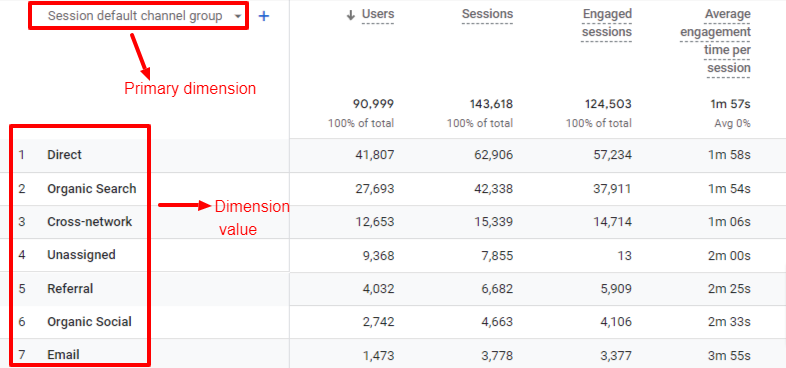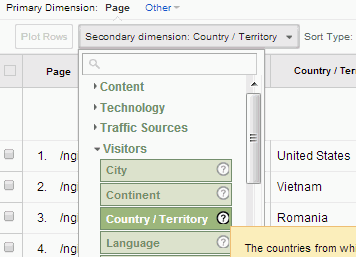Enhance Your Data Analysis Using Second Dimension in Google Analytics
Checking out the capabilities of second dimensions in Google Analytics opens up a realm of possibilities for refining information evaluation. By layering additional measurements onto key data sets, a more detailed narrative emerges, dropping light on customer interactions and performance signs.
Comprehending Secondary Measurements
In the realm of data evaluation, an important element to grasp is the concept of second measurements and their relevance in drawing out deeper insights from Google Analytics reports. Second measurements in Google Analytics describe additional parameters that can be included to the main measurement, permitting a much more detailed analysis of data. By including secondary dimensions, experts can section and filter information to discover patterns, trends, and relationships that might not appear when taking a look at the data overall. These secondary measurements can provide context and a more detailed understanding of user habits, website traffic resources, and other vital metrics tracked by Google Analytics.

Benefits of Making Use Of Second Measurements
When examining data in Google Analytics, the application of second dimensions supplies invaluable understandings right into customer actions and performance metrics. By including a secondary measurement to your main information, you can dig deeper right into the attributes of your web site visitors and their communications. One of the key benefits of using secondary measurements is the capability to sector and compare information more successfully. This segmentation permits you to understand just how different variables, such as demographics or web traffic sources, influence user habits and conversions (Secondary Dimension in Google Analytics).
In addition, second measurements help in determining patterns and relationships that may not be instantly noticeable when considering the information alone. This much deeper degree of analysis can reveal valuable information that can assist advertising techniques, website optimization, and general service decisions. In addition, second measurements enhance the context of your key information, giving a more comprehensive sight of individual interaction and efficiency metrics. Overall, making use of secondary measurements in Google Analytics can substantially enhance the depth and high quality of your data analysis, bring about even more enlightened decision-making and boosted results.
How to Include Secondary Measurements
By incorporating secondary dimensions in Google Analytics, users can obtain deeper understandings right into their data evaluation process, allowing for more thorough evaluation of customer actions and efficiency metrics. Adding second measurements is a simple process that can substantially boost the deepness of analysis. When in the report, situate the "Second dimension" tab over the information table.
Studying Information With Additional Dimensions
Using second measurements in data evaluation gives an extra comprehensive understanding of customer actions and efficiency metrics. By including a secondary dimension to your primary information embeded in Google Analytics, you can dig deeper right into the characteristics of your web site visitors and their interactions. Combining the primary dimension of find more 'source/medium' with the additional measurement of 'touchdown web page' can expose which details pages are attracting traffic from various resources, helping you optimize these web pages for far better engagement.

Fundamentally, examining information with additional dimensions equips you to get beneficial understandings into user habits, determine trends, and make educated decisions to enhance the performance of your electronic buildings.
Ideal Practices for Secondary Measurements
In data evaluation, incorporating additional measurements effectively can considerably enhance the depth of insights view it stemmed from metrics and customer behavior patterns. When making use of additional dimensions in Google Analytics or any type of other logical tool, it is critical to abide by ideal methods to make certain the accuracy and significance of the data evaluation.
One secret finest practice is to very carefully pick second measurements that enhance the main measurement being assessed. Selecting second measurements that offer additional context or further division can provide a much more extensive understanding of the data. It is additionally important to avoid overcomplicating the evaluation by including way too many additional dimensions, which might lead to complication or dilution of understandings.
Additionally, it is advisable to try out various mixes of primary and secondary dimensions to reveal new relationships and trends. On a regular basis assessing and refining the choice of second dimensions based upon the particular objectives of the analysis can bring about more workable insights. By complying with these finest practices, data analysts can take advantage of additional measurements successfully to boost the overall data analysis process and decision-making capacities.

Final Thought
To conclude, integrating second measurements in Google Analytics is essential for an extensive data analysis strategy. By leveraging second dimensions along with key ones, marketing experts and analysts can discover valuable understandings and correlations that go to my blog can notify decision-making and enhance digital marketing techniques. Recognizing how to efficiently use additional dimensions and following ideal techniques will permit specialists to extract significant data and boost their general performance metrics.
Secondary measurements in Google Analytics refer to extra parameters that can be included to the main dimension, allowing for an extra in-depth analysis of information. By including additional dimensions, experts can segment and filter information to uncover patterns, trends, and relationships that might not be evident when looking at the data as a whole. Combining the key dimension of 'source/medium' with the secondary measurement of 'landing web page' can disclose which specific web pages are attracting web traffic from different resources, assisting you maximize these web pages for far better involvement.
One key best practice is to carefully pick secondary measurements that enhance the main dimension being examined. By adhering to these finest methods, information experts can leverage additional measurements properly to improve the general information evaluation process and decision-making capacities.